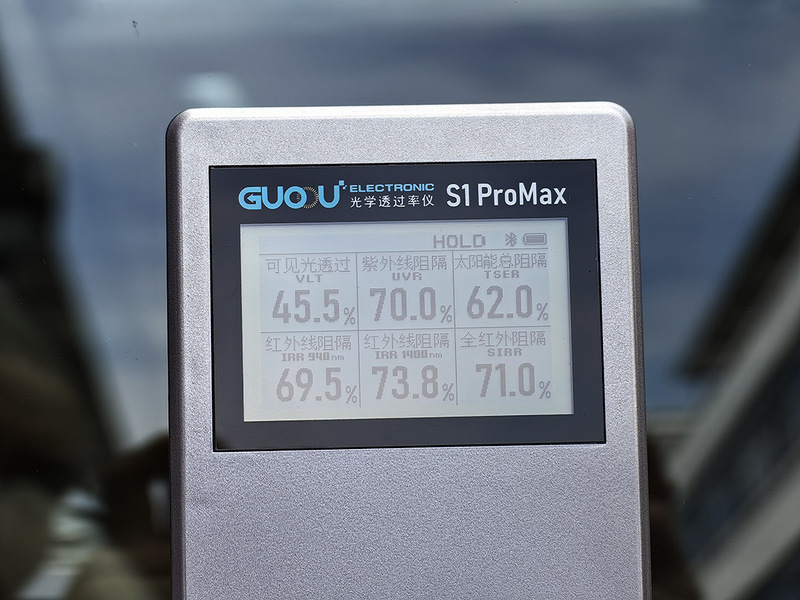
As summer arrives, many people are thinking about putting a film on their cars, but at the same time, they also have such concerns. Can the solar film transmission meter distinguish the quality of the car film?
First of all, the answer is: Yes, it is like our mobile phone performance running score. A mobile phone with strong performance may not be very easy to use, but it will definitely not be bad.
What do these parameters of the solar film tester represent?
In the performance evaluation system of automobile window films, ultraviolet rejection rate (UVR), infrared rejection rate (IRR) and visible light transmittance (VLT) constitute the core three-dimensional indicators. From a technical perspective:
Ultraviolet blocking rate: represents the ability to block the 280-380nm ultraviolet spectrum, which directly affects the interior protection and skin protection effect;
Infrared blocking rate: reflects the blocking performance of the 780-2500nm near-infrared spectrum, and determines the actual thermal insulation performance;
Visible light transmittance: measures the pass rate of the 380-780nm visible light band, which is related to the clarity of driving vision;
Total solar energy blocking rate: is a comprehensive measurement indicator data, which is the core parameter that reflects the performance of a thermal insulation film and is a multi-dimensional data measurement value. Now the leading film manufacturers at home and abroad are all testing this performance, and its importance is self-evident.

Films with impressive data are like mobile phones with great performance scores. In addition to the performance of the hardware, there are also factors such as software that determine whether a mobile phone is easy to use.
The structure of the car film is also very important
The car film is composed of many layers of thin films. For manufacturers, the combination of these layers, materials and production processes directly determine the cost, and thus the selling price. The material also determines the service life. A good car film can maintain the heat insulation effect for five or six years, or even longer. A poor solar film may not be very heat-insulating after one year, and may even have blistering and toxicity, which directly affects the physical and mental health of the car owner.
In addition, a good film has a certain scratch resistance and will not be scratched due to slight external force.
Two films with the same visible light transmittance of the solar film tester will also have different clarity. This is a concept different from light transmittance. For example, two films have the same visible light transmittance detected by the solar film tester, but when we use the naked eye to distinguish, we will find that one is obviously blurrier than the other. Such a film will easily fatigue the eyes after looking at it for a long time. Only car films with high clarity (especially car front windshield films) can ensure the driving safety of car owners.
Summary:
The solar film tester can indeed help us screen out films with poor performance. If the test instrument supports the display of core parameters such as the total solar energy blocking rate, such as the instrument of the Euro S1 Pro Max, it has a four-channel parallel light source design, the error will be lower, and it has also passed the verification of the South China Institute of Metrology. The data of professional instruments are often more credible. However, the quality of a film also needs to be comprehensively evaluated from the aspects of process and even after-sales service.




